Effect of Service Temperature on Mechanical Properties of Adhesive Joints after Hygrothermal Aging
Abstract
:1. Introduction
2. Experimental Study
2.1. Materials
2.2. Joint Type
2.3. Joint Stress Distribution and Arcan Fixture Test
2.4. Accelerated Aging and Quasi-Static Test
3. Results and Analysis
3.1. Failure Load Analysis
3.2. Failure Strength Degradation Model
3.3. Failure Section Analysis
3.4. SEM Analysis
4. Failure Criterion
4.1. Failure Criterion Theory
4.2. Establishment of Failure Criterion
5. Conclusions
- (1)
- The stress state and temperature have significant influence on the failure load of the adhesive joints after hygrothermal aging. The failure load decreases most obviously at low temperature, which is closely related to the failure mode of the joints. With the increase of the normal stress ratio in the joint, the decline of failure load increases gradually.
- (2)
- The failure strength prediction model of joints with different aging levels changing with time at different temperatures was established. The exponential function can obtain very satisfactory fitting accuracy. The fitting effect is better at room temperature and low temperature. The dispersion of joint failure strength is small.
- (3)
- The main failure mode of TASJs is cohesive failure, while BJs are prone to interface failure, and the interface failure is more evident with the decrease of test temperature. The interface failure and the hydrolysis reaction of polyurethane adhesive are the main reasons for the decline of joint strength.
- (4)
- The failure strength of the adhesive joints conforms to the secondary stress failure criterion. The surface equations reflecting the relationship between the quadratic stress criterion, the service temperature, and the aging period were established for the joints.
Author Contributions
Funding
Institutional Review Board Statement
Informed Consent Statement
Data Availability Statement
Conflicts of Interest
References
- Zhao, M. Elastic bonding and sealing of train windows. Adhesion 2019, 40, 172–176. [Google Scholar]
- Banea, M.D.; De Sousa, F.S.; Da Silva, L.F.; Campilho, R.D.; de Pereira, A.B. Effects of Temperature and Loading Rate on the Mechanical Properties of a High Temperature Epoxy Adhesive. J. Adhes. Sci. Technol. 2011, 25, 2461–2474. [Google Scholar] [CrossRef]
- Viana, G.M.; Costa, M.; Banea, M.D.; Da Silva, L.F. A review on the temperature and moisture degradation of adhesive joints. Proc. Inst. Mech. Eng. Part L 2016, 231, 488–501. [Google Scholar] [CrossRef]
- Kang, S.G.; Kim, M.G.; Kim, C.G. Evaluation of cryogenic performance of adhesives using composite-aluminum double-lap joints. Compos. Struct. 2007, 78, 440–446. [Google Scholar] [CrossRef]
- Banea, M.D.; Silva LF, M.D.; Campilho RD, S.G. Effect of temperature on tensile strength and mode I fracture toughness of a high temperature epoxy adhesive. J. Adhes. Sci. Technol. 2012, 26, 939–953. [Google Scholar] [CrossRef]
- Grant, L.D.R.; Adams, R.D.; Silva, L.F.M.D. Effect of the temperature on the strength of adhesively bonded single lap and T joints for the automotive industry. Int. J. Adhes. Adhes. 2009, 29, 535–542. [Google Scholar] [CrossRef]
- Banea, M.D.; Silva, L.F.M.D. The effect of temperature on the mechanical properties of adhesives for the automotive industry. Proc. Inst. Mech. Eng. Part L 2010, 224, 51–62. [Google Scholar] [CrossRef]
- Marques, E.A.; da Silva, L.F.; Banea, M.D.; Carbas, R.J. Adhesive joints for low-and high-temperature use: An overview. J. Adhes. 2015, 91, 556–585. [Google Scholar] [CrossRef]
- Na, J.; Mu, W.; Qin, G.; Tan, W.; Pu, L. Effect of temperature on the mechanical properties of adhesively bonded basalt FRP-aluminum alloy joints in the automotive industry. Int. J. Adhes. Adhes. 2018, 85, 138–148. [Google Scholar] [CrossRef]
- Tan, W.; Na, J.X.; Mu, W.L.; Shen, H.; Qin, G. Effect of service temperature on static failure of BFRP/aluminum alloy adhesive joints. J. Traffic Transp. Eng. 2020, 20, 171–180. [Google Scholar]
- Silva, L.F.M.D.; Adams, R.D.; Gibbs, M. Manufacture of adhesive joints and bulk specimens with high-temperature adhesives. Int. J. Adhes. Adhes. 2004, 24, 69–83. [Google Scholar] [CrossRef]
- Patil, O.R.; Ameli, A.; Datla, N.V. Predicting environmental degradation of adhesive joints using a cohesive zone finite element model based on accelerated fracture tests. Int. J. Adhes. Adhes. 2017, 76, 54–60. [Google Scholar] [CrossRef]
- Costa, M.; Viana, G.; da Silva, L.F.; Campilho, R.D. Effect of humidity on the mechanical properties of adhesively bonded aluminium joints. Proc. Inst. Mech. Eng. Part L 2018, 232, 733–742. [Google Scholar] [CrossRef]
- Popineau, S.; Rondeau-Mouro, C.; Sulpice-Gaillet, C.; Shanahan, M.E. Free/bound water absorption in an epoxy adhesive. Polymer 2005, 46, 10733–10740. [Google Scholar] [CrossRef]
- Heshmati, M.; Haghani, R.; Al-emrani, M. Environmental durability of adhesively bonded FRP/steel joints in civil engineering applications: State of the art. Compos. B Eng. 2015, 81, 259–275. [Google Scholar] [CrossRef]
- Viana, G.; Costa, M.; Banea, M.D.; Da Silva, L.F. Moisture and temperature degradation of double cantilever beam adhesive joints. J. Adhes. Sci. Technol. 2017, 31, 1824–1838. [Google Scholar] [CrossRef]
- Wei, T.; Jingxin, N.; Wenlong, M.; Guangbin, W.; Yao, F. Effects of hygrothermal aging on the mechanical properties of aluminum alloy adhesive joints for high-speed train applications. J. Adhes. 2020, 1–30. [Google Scholar] [CrossRef]
- Créac’Hcadec, R.; Sohier, L.; Cellard, C.; Gineste, B. A stress concentration-free bonded arcan tensile compression shear test specimen for the evaluation of adhesive mechanical response. Int. J. Adhes. Adhes. 2015, 61, 81–92. [Google Scholar] [CrossRef]
- Lee, M.; Wang, C.H.; Yeo, E. Effects of adherend thickness and taper on adhesive bond strength measured by portable pull-off tests. Int. J. Adhes. Adhes. 2013, 44, 259–268. [Google Scholar] [CrossRef]
- Qin, G.; Fan, Y.; Na, J.; Mu, W.; Tan, W. Durability of aluminium alloy adhesive joints in cyclic hydrothermal condition for high-speed EMU applications. Int. J. Adhes. Adhes. 2018, 84, 153–165. [Google Scholar] [CrossRef]
- Jiang, X.; Qiang, X.; Kolstein, H.; Bijlaard, F. Analysis on adhesively-bonded joints of FRP-steel composite bridge under combined loading: Arcan test study and numerical modeling. Polymers 2016, 8, 18. [Google Scholar] [CrossRef] [PubMed] [Green Version]
- Fan, Y.; Na, J.; Mu, W.; Qin, G.; Tan, W. Effect of Hygrothermal Cycle Aging on the Mechanical Behavior of Single-lap Adhesive Bonded Joints. J. Wuhan Univ. Technol. Mater. Sci. Ed. 2019, 34, 337–344. [Google Scholar] [CrossRef]
- Chiche, A.; Dollhofer, J.; Creton, C. Cavity growth in soft adhesives. Eur. Phys. J. E 2005, 17, 389–401. [Google Scholar] [CrossRef] [Green Version]
- Lindner, A.; Maevis, T.; Brummer, R.; Lühmann, B.; Creton, C. Subcritical failure of soft acrylic adhesives under tensile stress. Langmuir 2004, 20, 9156–9169. [Google Scholar] [CrossRef] [PubMed]
- Li, Y.; Miranda, J.; Sue, H.J. Hygrothermal diffusion behavior in bismaleimide resin. Polymer 2001, 42, 7791–7799. [Google Scholar] [CrossRef]
- Ni, X.X. Aging Behavior and Mechanism of Topical Polymer-Adhesive. Ph.D. Thesis, The University of Science and Technology Beijing, Beijing, China, 2009. [Google Scholar]
- Lee, M.; Yeo, E.; Blacklock, M.; Janardhana, M.; Feih, S.; Wang, C.H. Predicting the strength of adhesively bonded joints of variable thickness using a cohesive element approach. Int. J. Adhes. Adhes. 2015, 58, 44–52. [Google Scholar] [CrossRef]
- Qin, G.; Na, J.; Tan, W.; Mu, W.; Ji, J. Failure prediction of adhesively bonded CFRP-Aluminum alloy joints using cohesive zone model with consideration of temperature effect. J. Adhes. 2019, 95, 723–746. [Google Scholar] [CrossRef]
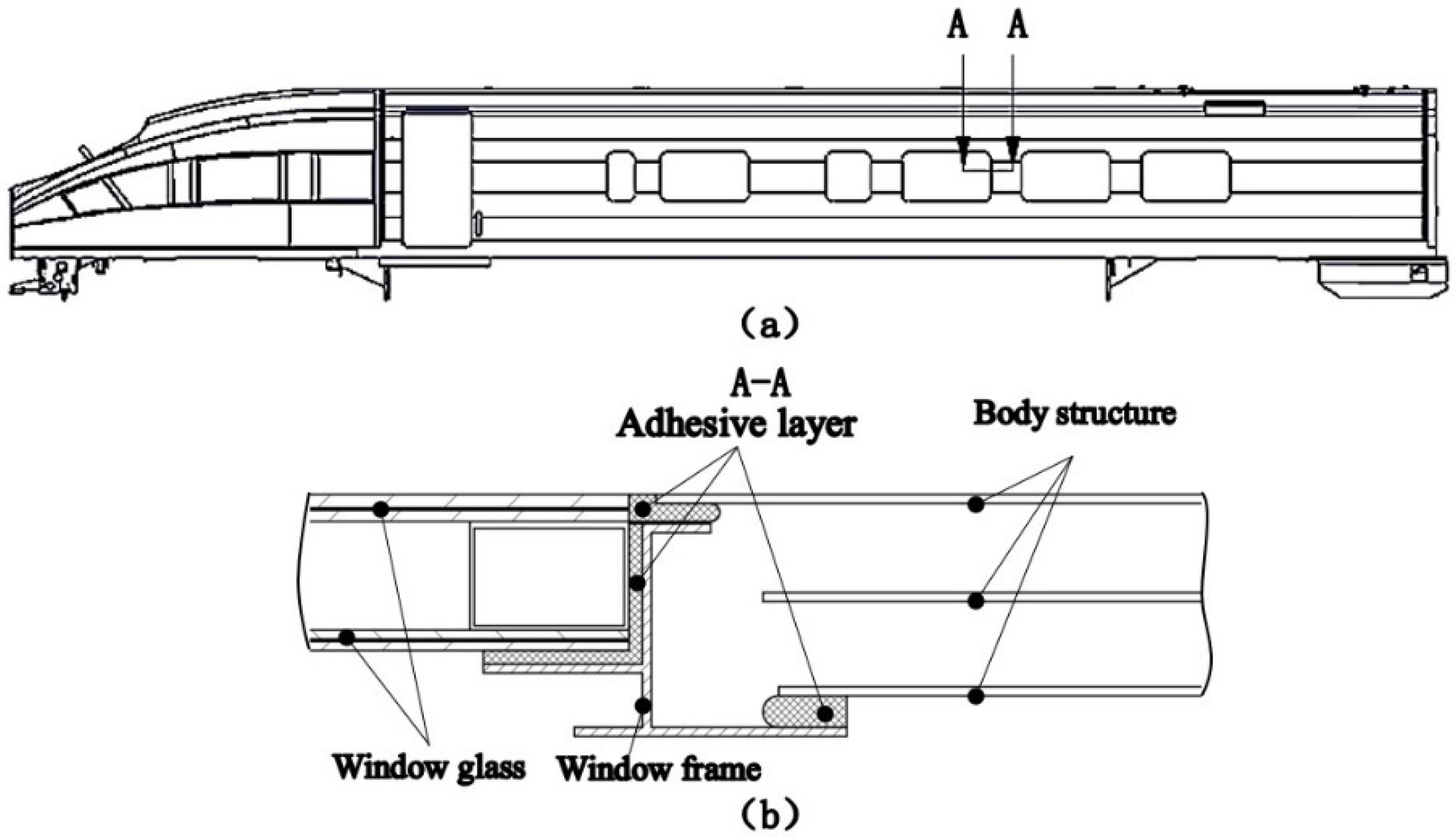
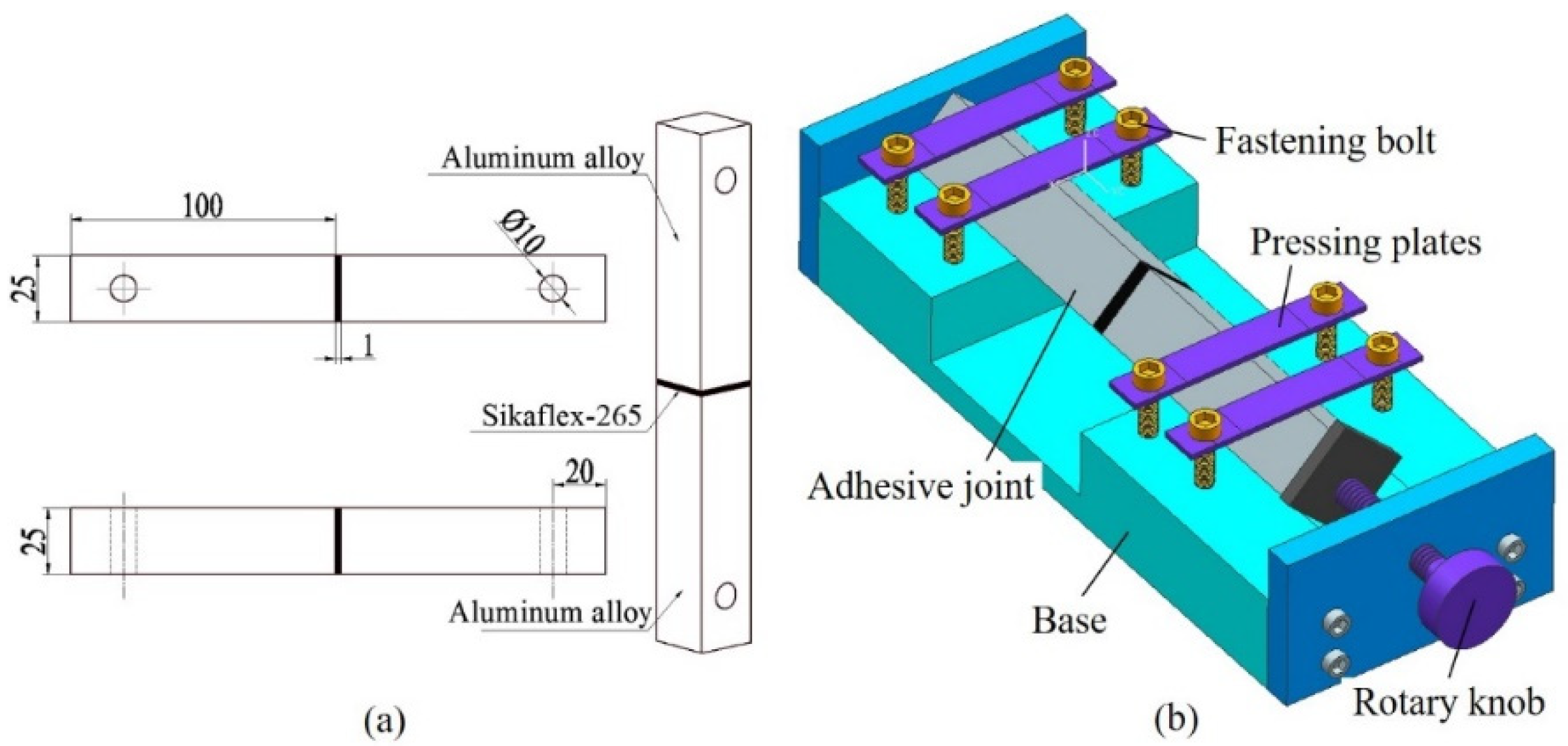
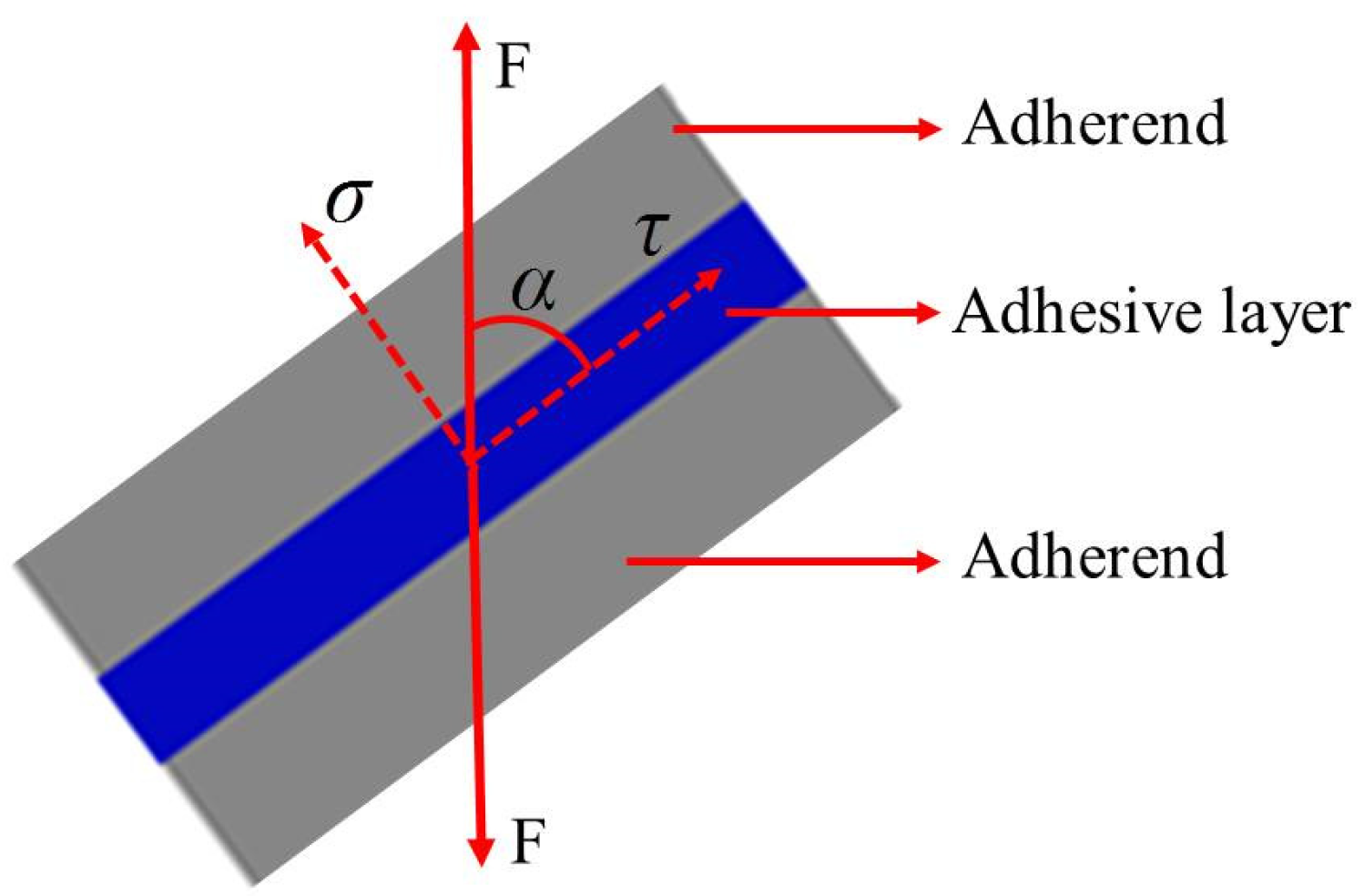
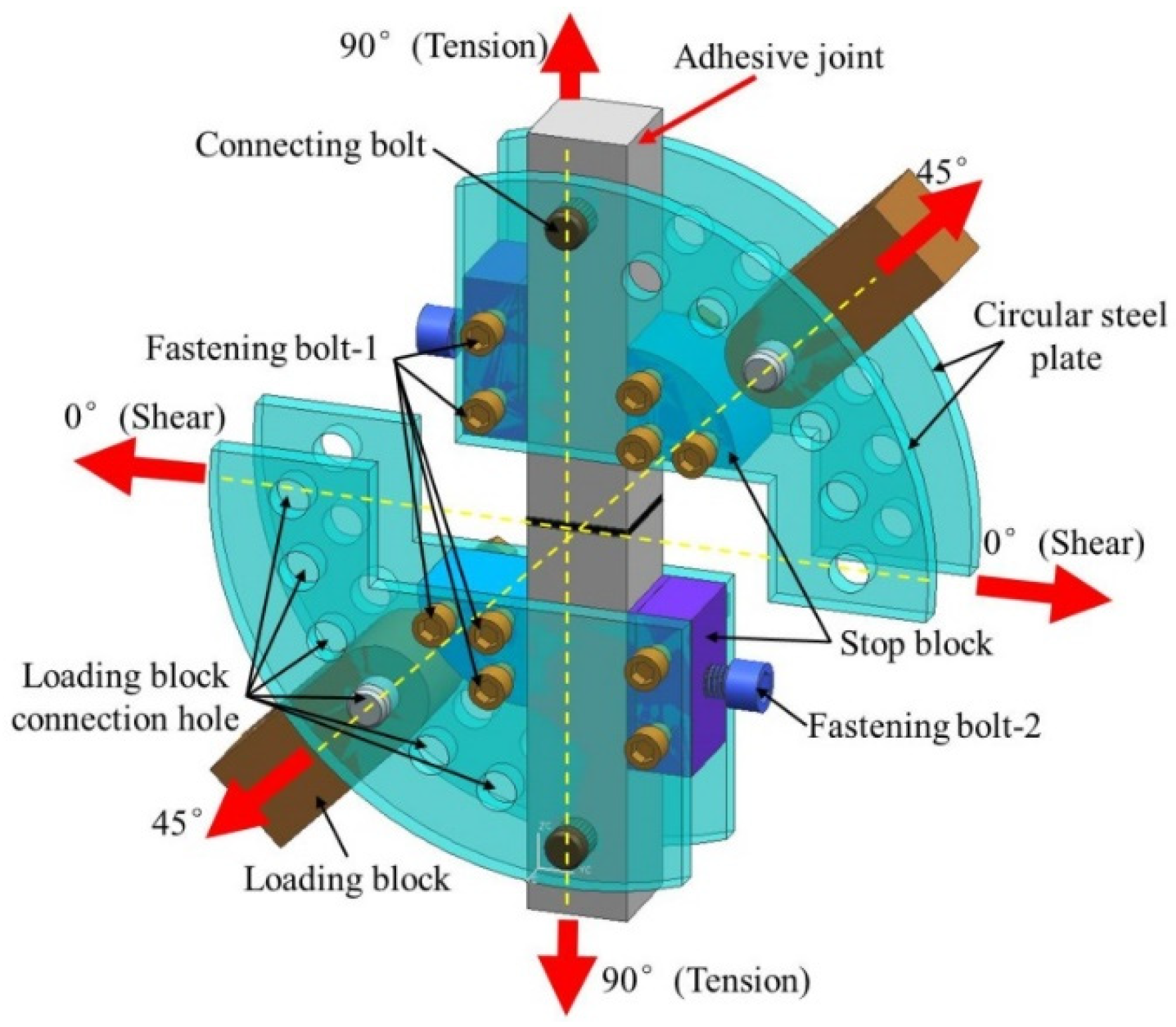


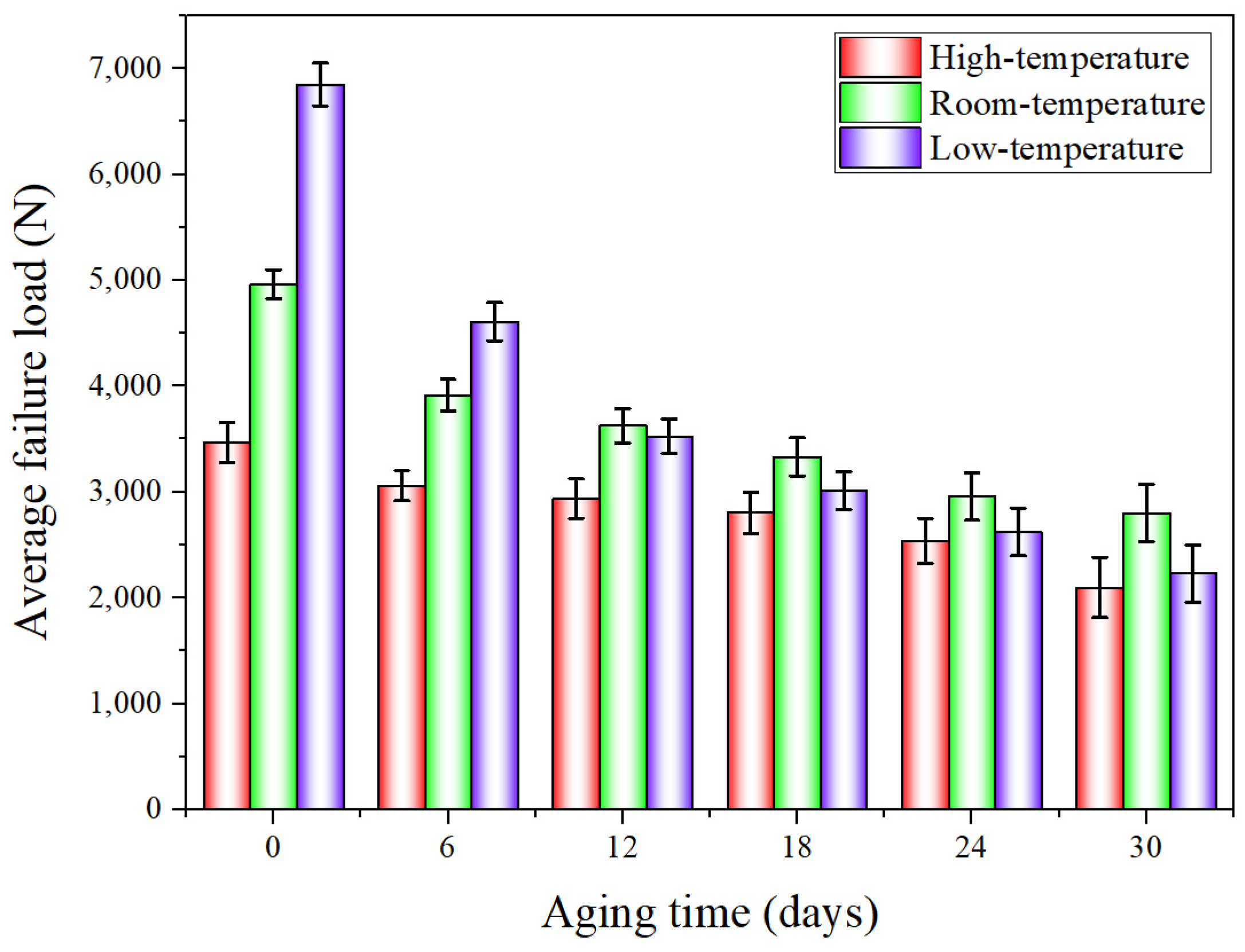
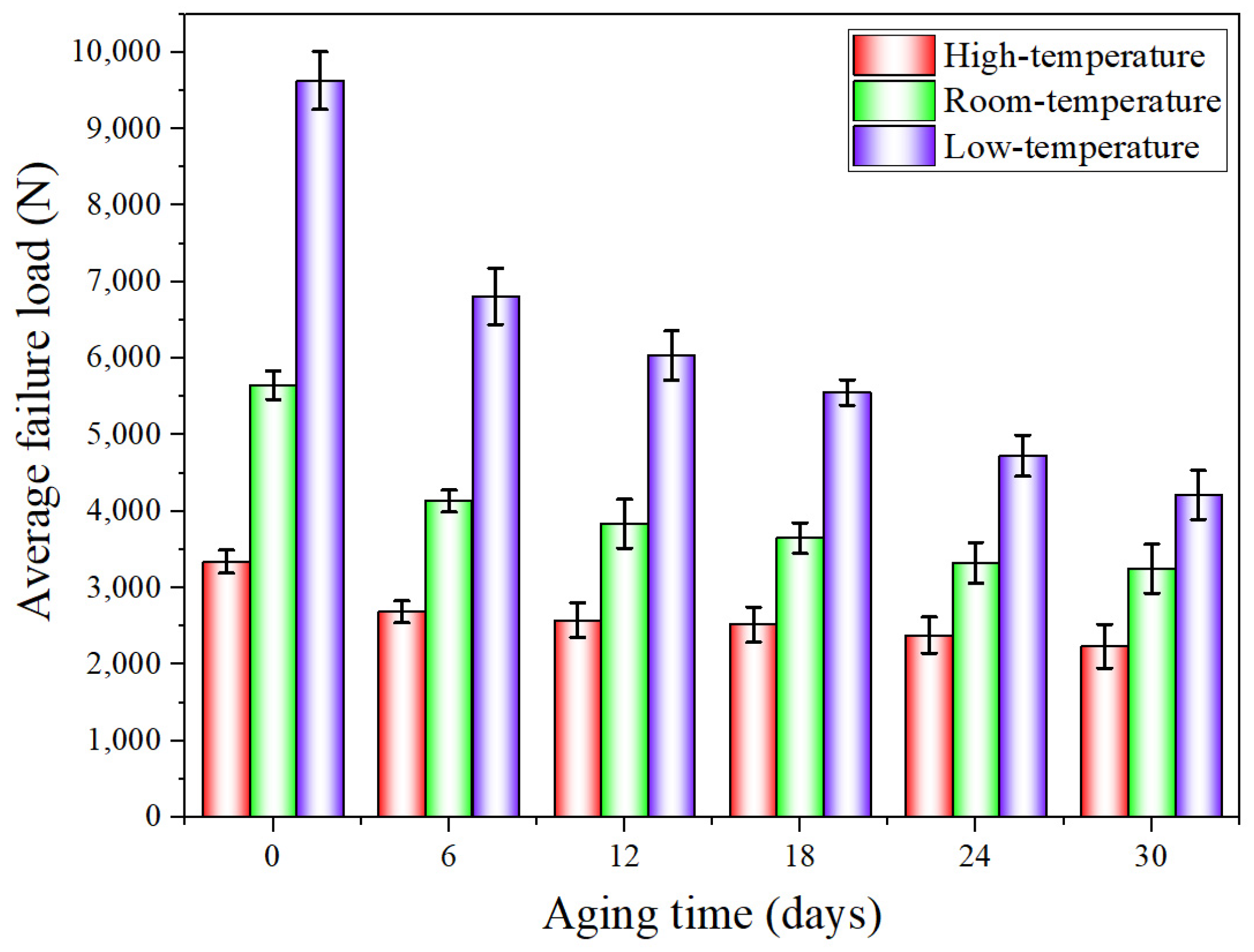
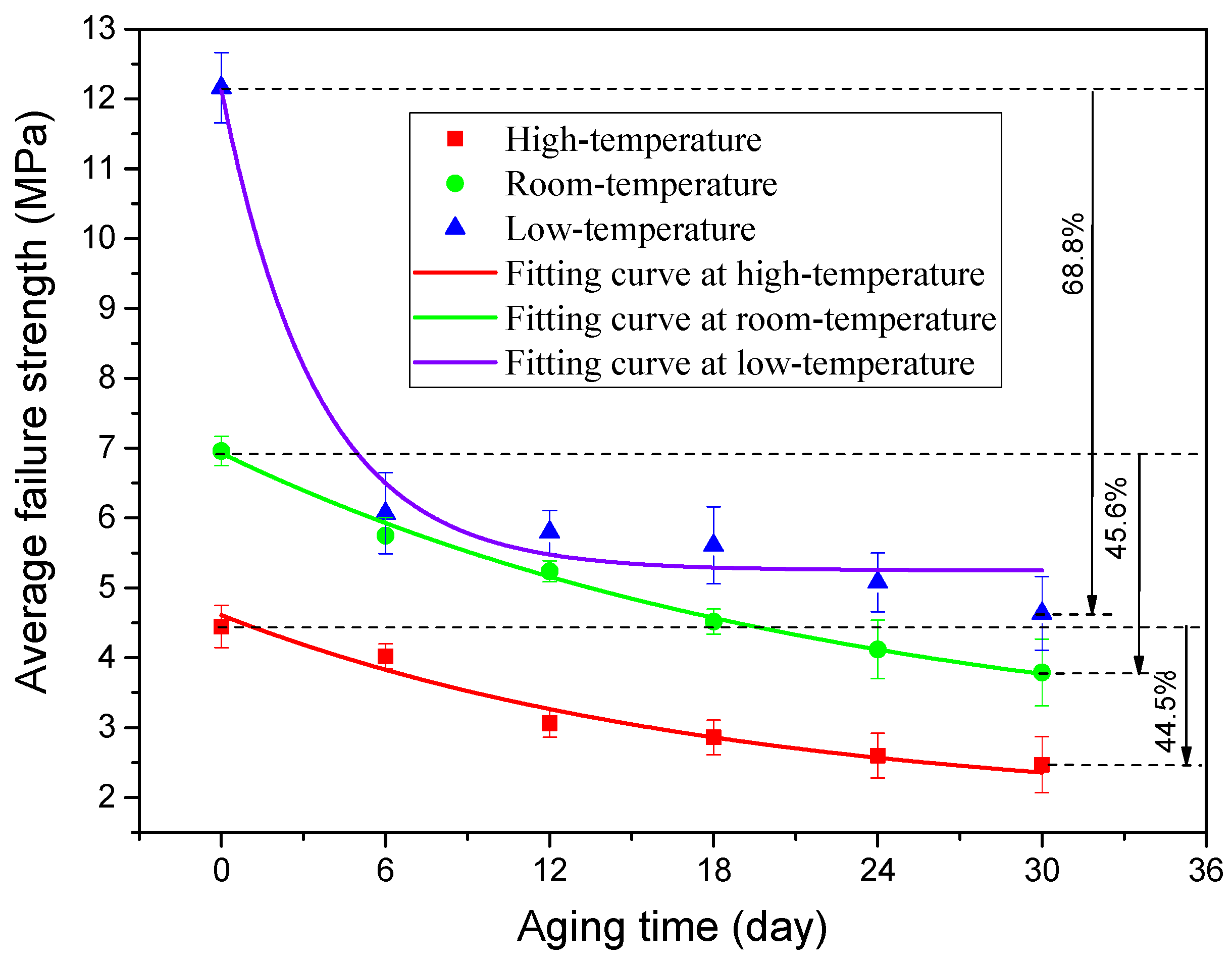
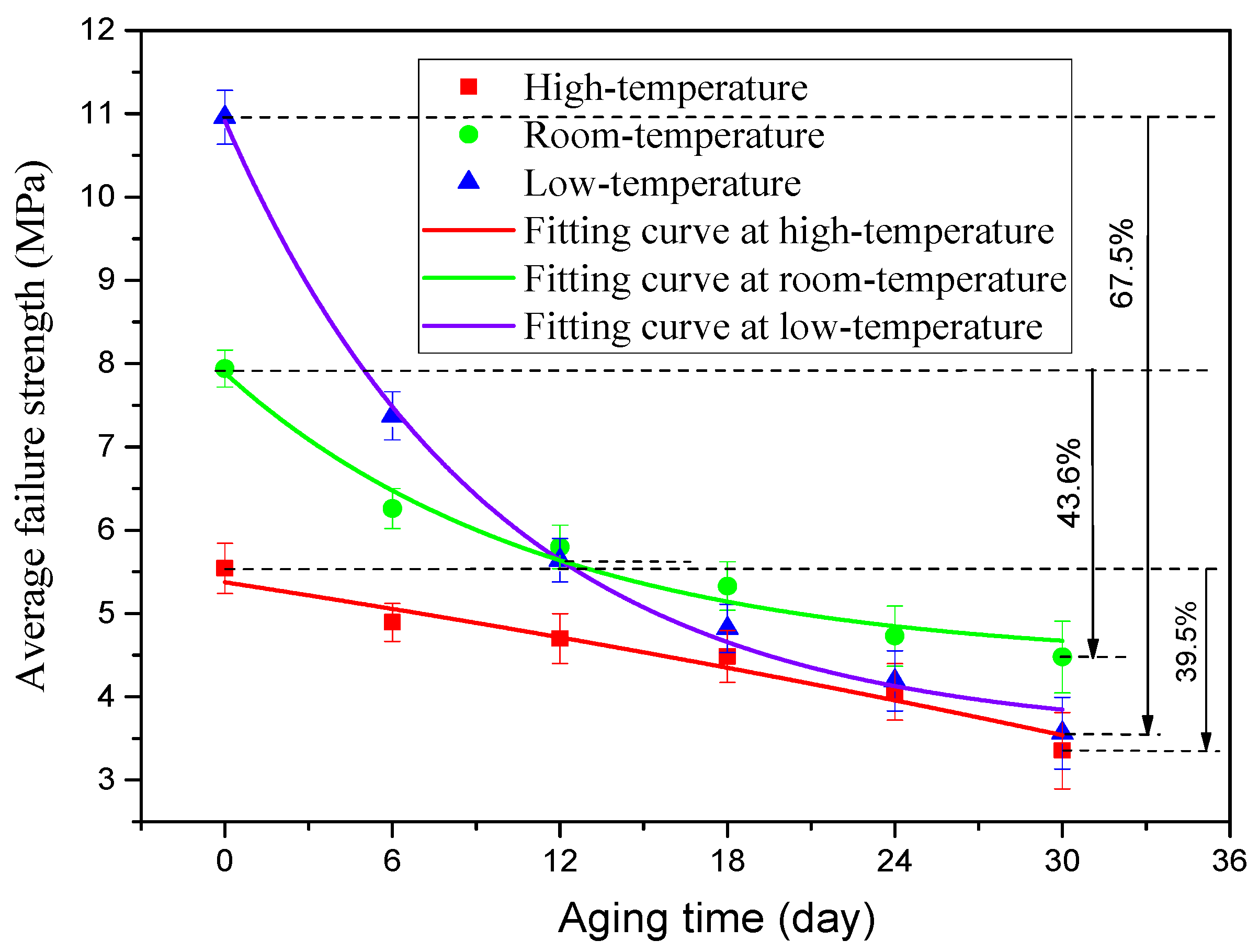

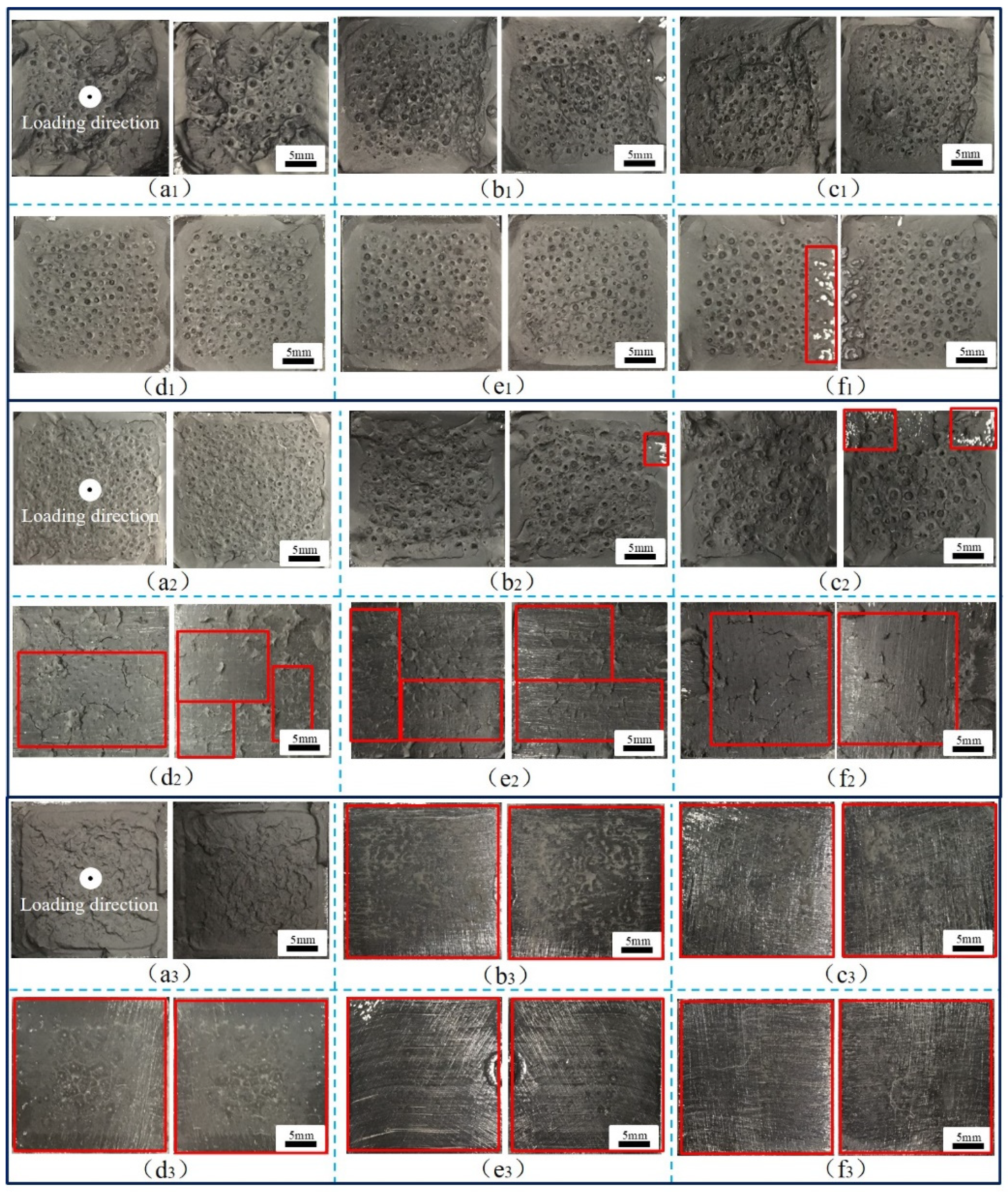
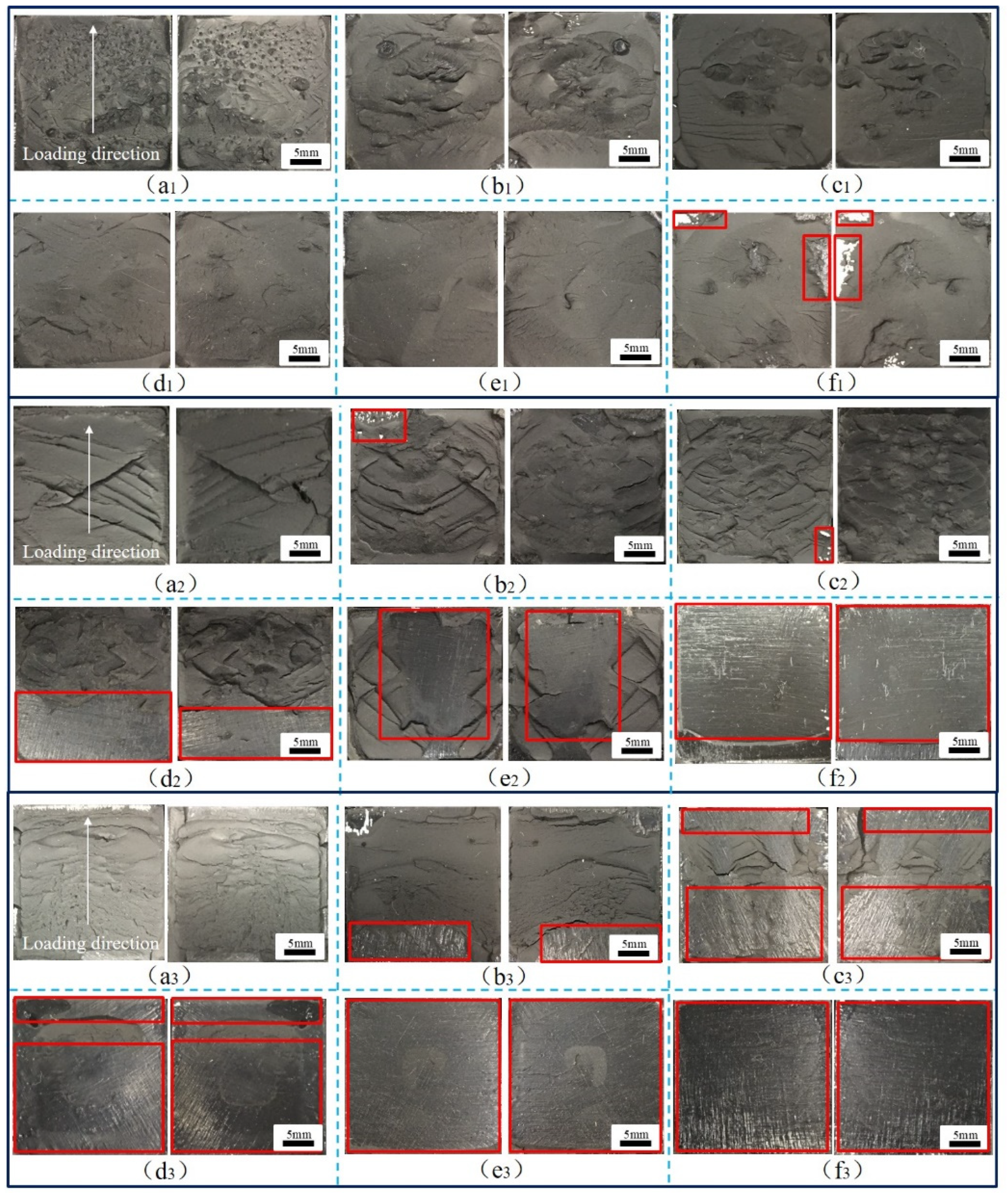
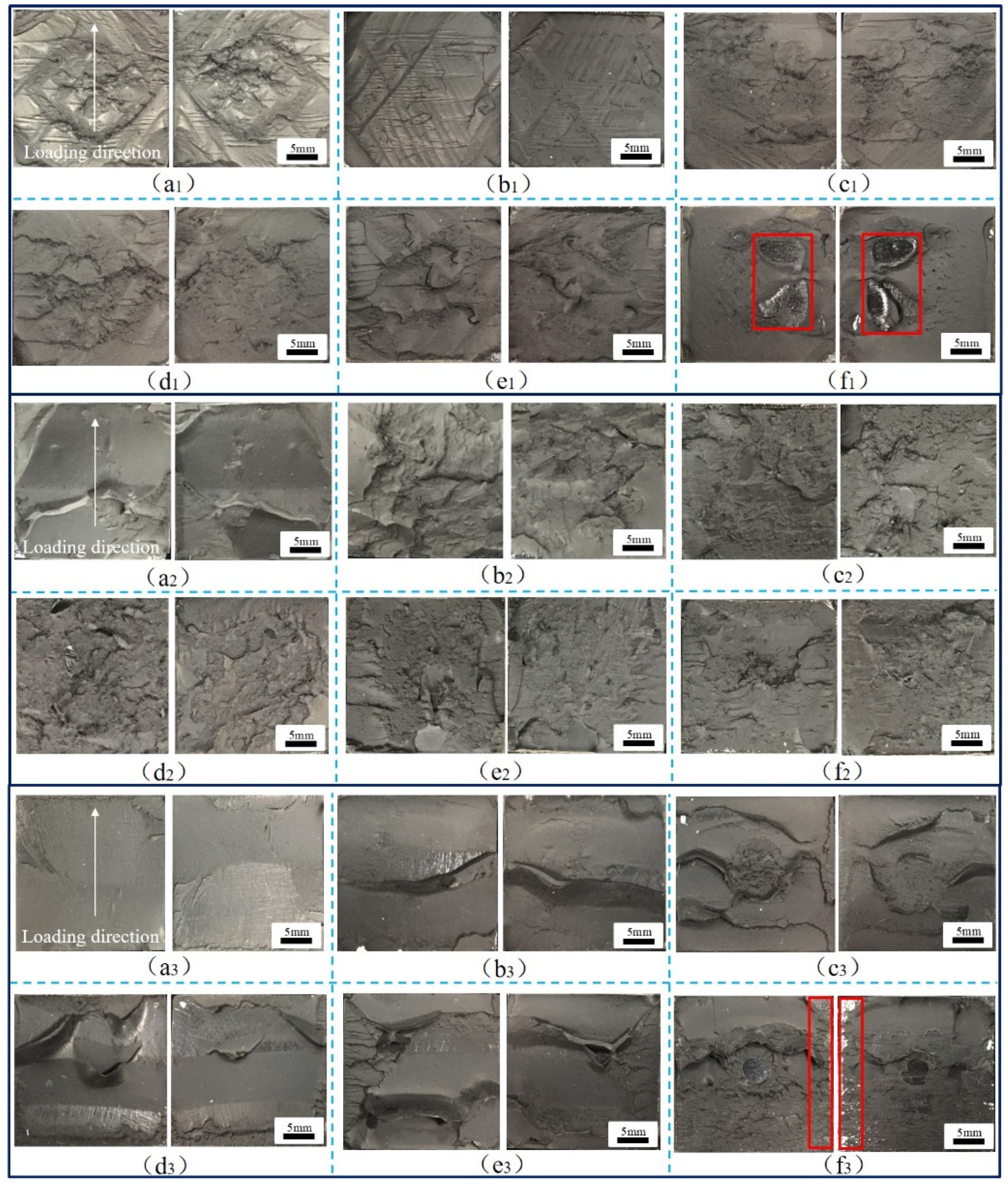

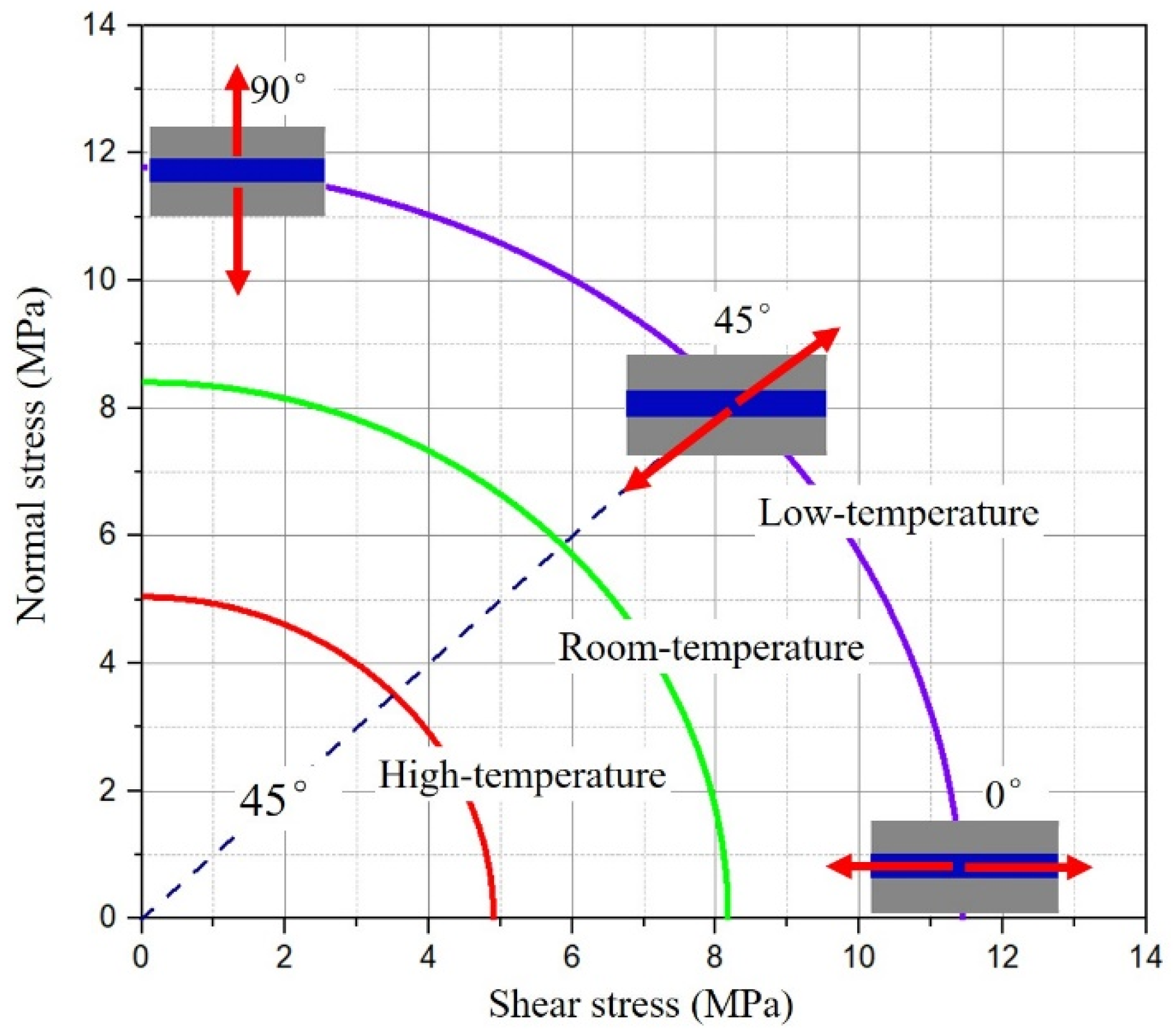
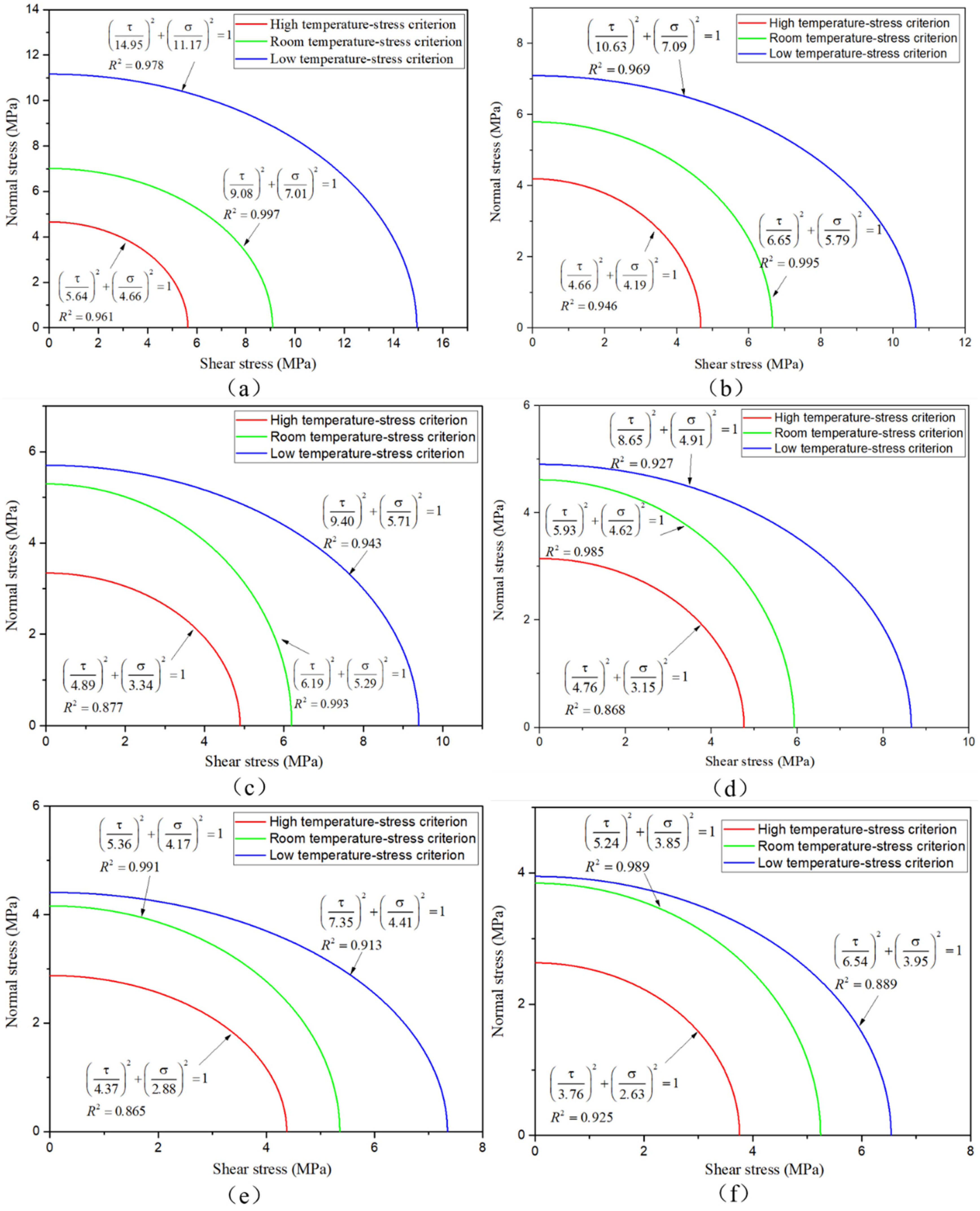
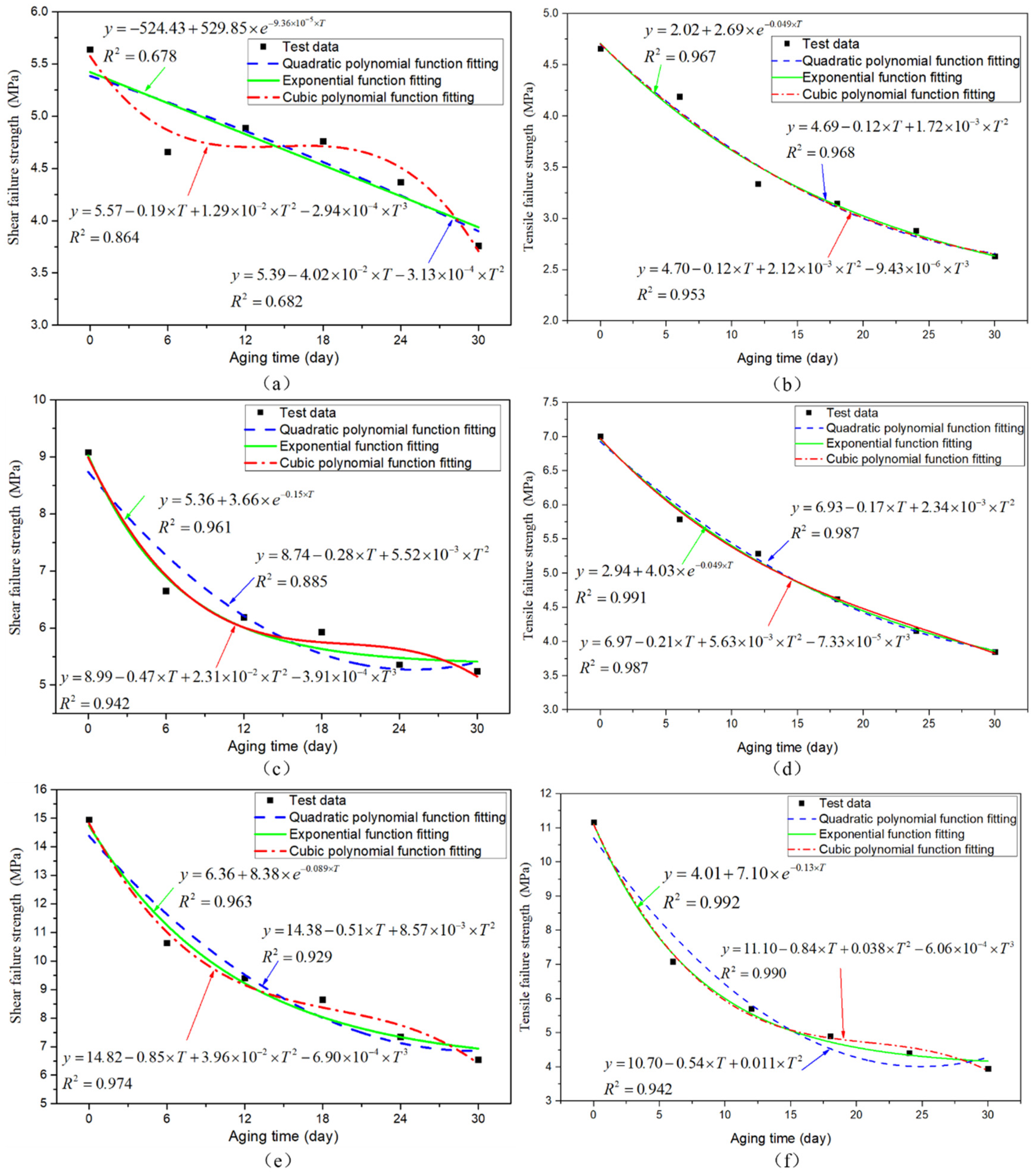
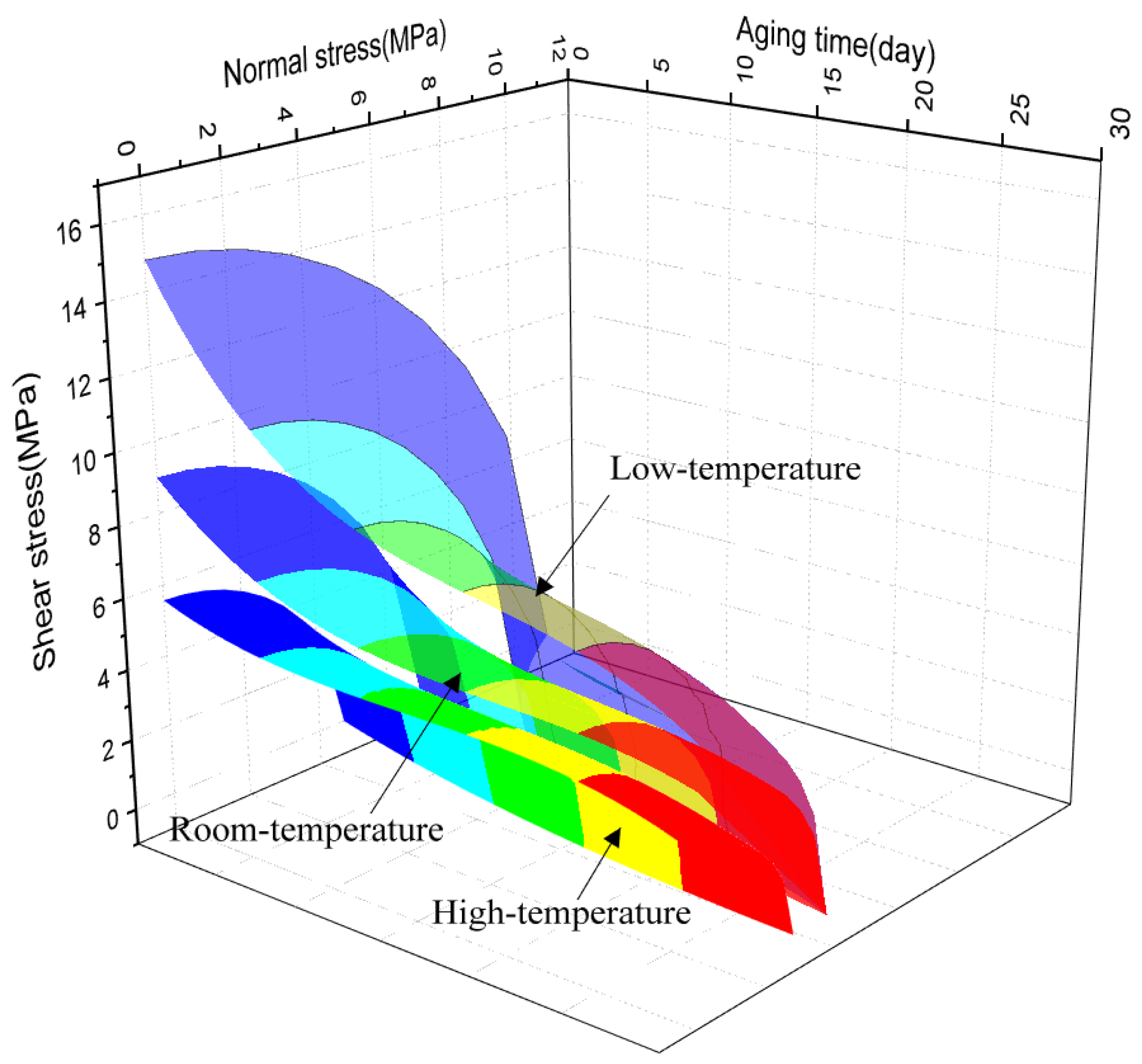
| Young’s Modulus (GPa) | Poisson’s Ratio | Density (kg/m3) |
|---|---|---|
| 71 | 0.33 | 2730 |
| Property | Value |
|---|---|
| Young’s modulus, E (MPa) | 4.8 |
| Poisson’s ratio | 0.48 |
| Tensile failure strength (MPa) | 8 |
| Shear failure strength (MPa) | 4.5 |
| Fracture elongation (%) | 450 |
| Density (kg/m3) | 1200 |
| Working temperature (°C) | −40~90 |
| Glass transition temperature (°C) | About −45 |
| Loading Condition | Test Temperature/°C | Function Expression | R2 |
|---|---|---|---|
| BJ | 80 | 0.90 | |
| 20 | 0.99 | ||
| −40 | 0.96 | ||
| 45° SJ | 80 | 0.90 | |
| 20 | 0.97 | ||
| −40 | 0.99 | ||
| TASJ | 80 | 0.96 | |
| 20 | 0.97 | ||
| −40 | 0.94 |
Publisher’s Note: MDPI stays neutral with regard to jurisdictional claims in published maps and institutional affiliations. |
© 2021 by the authors. Licensee MDPI, Basel, Switzerland. This article is an open access article distributed under the terms and conditions of the Creative Commons Attribution (CC BY) license (https://creativecommons.org/licenses/by/4.0/).
Share and Cite
Tan, W.; Na, J.; Zhou, Z. Effect of Service Temperature on Mechanical Properties of Adhesive Joints after Hygrothermal Aging. Polymers 2021, 13, 3741. https://doi.org/10.3390/polym13213741
Tan W, Na J, Zhou Z. Effect of Service Temperature on Mechanical Properties of Adhesive Joints after Hygrothermal Aging. Polymers. 2021; 13(21):3741. https://doi.org/10.3390/polym13213741
Chicago/Turabian StyleTan, Wei, Jingxin Na, and Zhaofeng Zhou. 2021. "Effect of Service Temperature on Mechanical Properties of Adhesive Joints after Hygrothermal Aging" Polymers 13, no. 21: 3741. https://doi.org/10.3390/polym13213741
APA StyleTan, W., Na, J., & Zhou, Z. (2021). Effect of Service Temperature on Mechanical Properties of Adhesive Joints after Hygrothermal Aging. Polymers, 13(21), 3741. https://doi.org/10.3390/polym13213741





